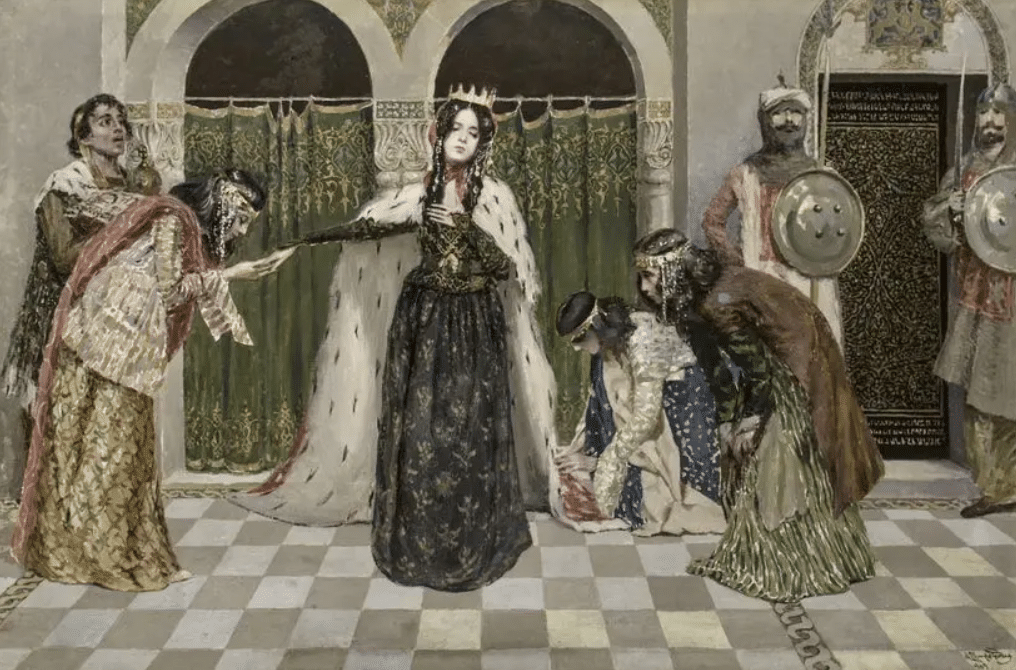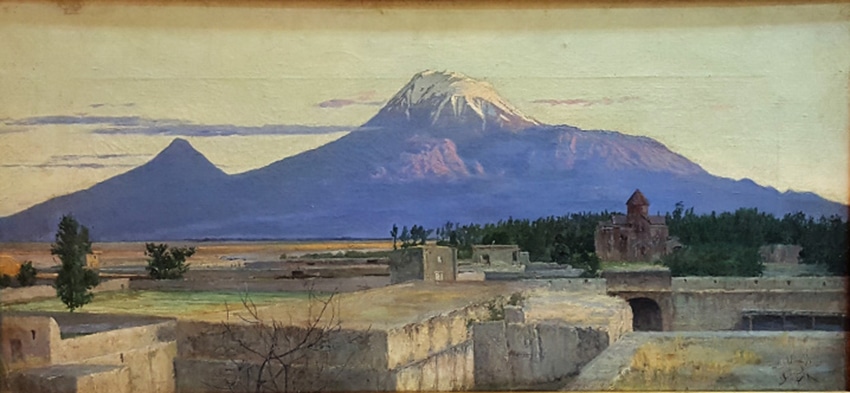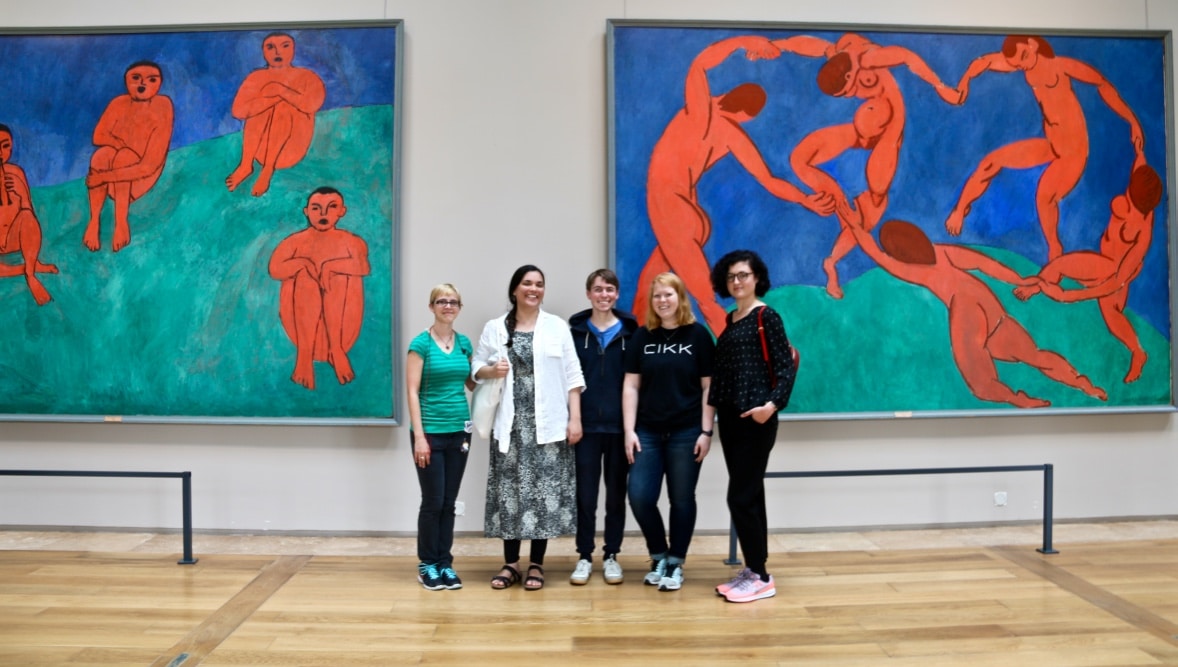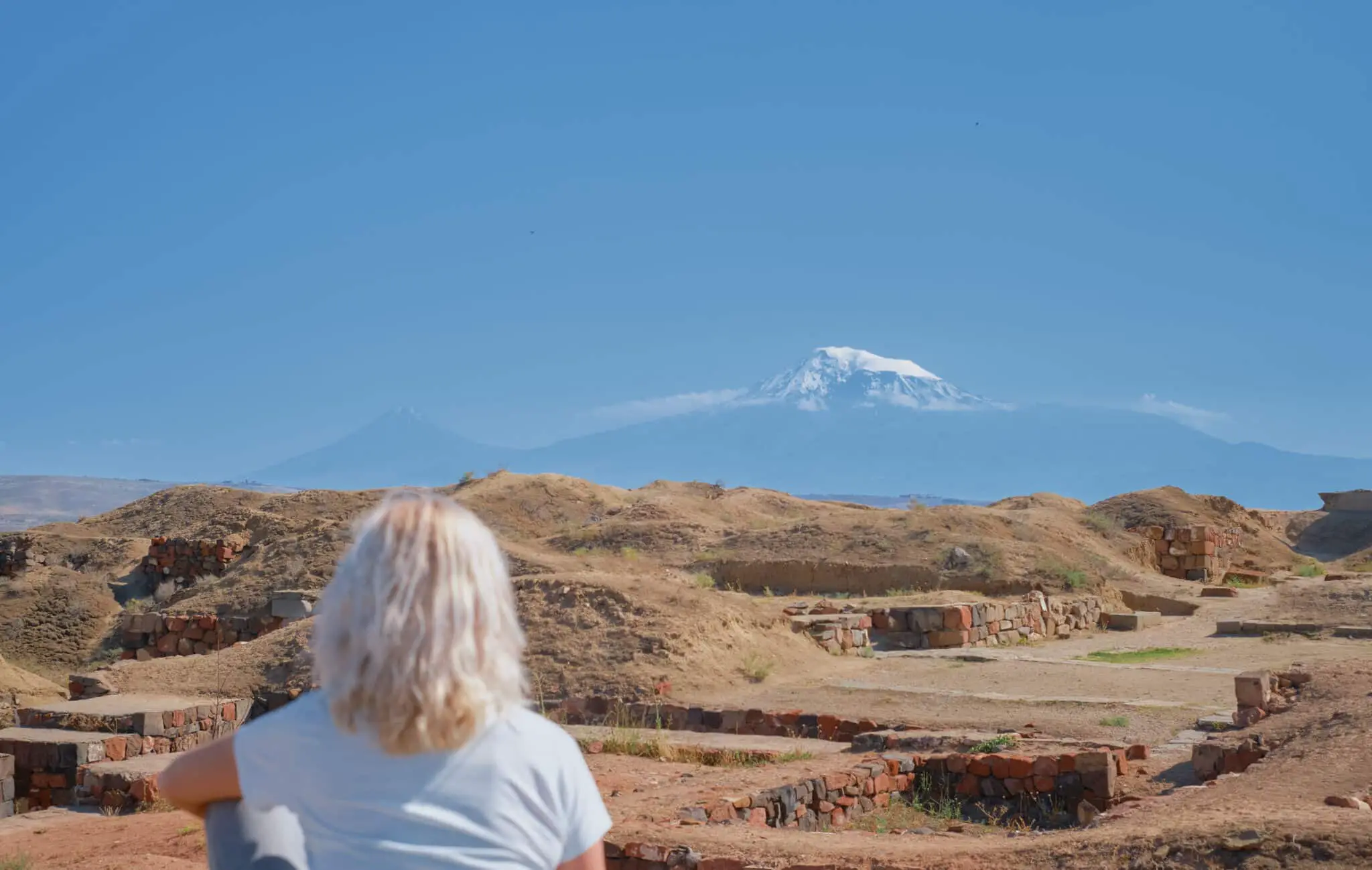The fortress of Erebuni, once the great capital of the mighty Uratu Kingdom, is located on the outskirts of Yerevan. The ruins of the citadel are flanked on one side by quiet mountains – their rocky slopes reaching up toward the hot summer sun. On the other side is Yerevan and the Ararat plain. The noise of the city barely penetrates the solitude of the fortress.
We visited the Erebuni complex as part of our cultural program, included with our SRAS study abroad program in Armenia to introduce us to the local history and culture. The complex tody contains a museum and an archeological site. The museum displays an architectural model of the original fortress, cuneiform tablets from the eighth century BCE, and artifacts from that time.
If you are visiting on your own, the entrance fee is 1500 dram per person (3.72 USD), and the optional tour is 4500 dram (11.15 USD). The guided tour lasted approximately one hour and was available in multiple languages, including Russian and English. This can be purchased at the museum’s entrance, and further information about the complex can be found at Visit Yerevan.
After entering the museum, my group followed our tour guide to an architectural model of the original fortress, which depicts the walled castle and a temple dedicated to the Urartian pantheon. As inscribed in a nearby cuneiform tablet, Erebuni was built in the 8th Century by King Arguisti I, who ruled over the Urartu people, a precursor to modern-day Armenians. The Urartu were a deeply religious, agrarian people who were skilled at blacksmithing and winemaking. Most of what is left of the Urartu includes ancient pipes used for water transportation, pottery, weapons, bronze icons of their deities, and the remnants of once-exquisite jewelry. After looking at the rows of artifacts, my tour group continued into an atrium containing some reliefs and khachkars, or Armenian stone crosses used to mark burial sites and palaces of historical or religious significance. These khachkars mark a historical shift from Urartian culture to Armenian. Around 1 AD, Armenia turned from its pagan roots and adopted Christianity as its official religion, thus prompting the creation of these crosses. Khachkars are scattered all over Armenia, many of which are not located behind museum walls.
Even though they are not the same, Armenians hold the history of the Urartu as their own. Their civilization was foundational to modern-day Armenia — even the beloved name of “Yerevan” is likely descended in name from the Urartu name “Erebuni.”
After the tour, my group walked around the archeological site. There are a few ruins and remnants of paintings. The broken and overgrown walls hint at a once-glorious stronghold, and the faded frescos whisper of past bravery and valor. It is clear why the Urartu chose to build Erebuni here. The fortress, located 65 meters above Yerevan, provides a bird’s-eye view of the city and the surrounding hillside.
Looking at the glittering city below, I was overwhelmed by the history around me. If you are lucky enough to visit Erebuni, contemplate what has happened within its walls – from the victories of battles and losses of wars to the mundane events of everyday life. Take the time to consider the vastness of history, the brevity of our own lives, and the beauty of ordinary things. Such places as Erebuni can remind us that there is more to life than those little annoyances that seem to ruin our entire day or the endless to-do lists that rule over our every waking hour. There are things worth fighting for. The human experience is riddled with war and loss, but also with beauty, courage, and art. It does no one good to focus on the brokenness of the world, but we must allow places like Erebuni to remind us that out of brokenness comes humanity, beauty, and art.
You’ll Also Love

Yerevan Museums: The Best in History and Art
The following is a brief introduction to some of the best Yerevan museums for history and art. It is meant to help students on SRAS programs in Armenia or faculty planning SRAS-supported custom programs to develop ideas for itineraries to learn and grow abroad! History Museums From lost ancient kingdoms to modern independence, explore the […]

The Hovhannes Sharambeyan Museum of Folk Arts in Armenia
The Hovhannes Sharambeyan Museum of Folk Arts is located on the outskirts of Yerevan, serving to preserve both tangible and intangible elements of Armenian cultural heritage through a rich collection of historic objects across all areas of Armenian folk art including textiles, woodcarving, and metal working. They also work to preserve traditions, sometimes hosting book […]

The National Gallery of Armenia
The National Gallery of Armenia, housed in a grand building on Yerevan’s Republic Square, offers a fascinating look at how Armenia’s art has evolved through the centuries from Early Christian art to the 20th century. Several galleries display Russian and other European art as well, highlighting the dialogues which have taken place between Armenia and […]

Museums as Self-Care
In 2018, doctors in Montreal began prescribing visits to the Montreal Museum of Fine Arts (MMFA) for patients experiencing depression, anxiety, and other health issues. This innovative approach to mental health treatment was launched under the initiative of the MMFA in collaboration with Médecins francophones du Canada (MFdC). The program allows physicians to provide patients […]

Book Review of Lavash at First Sight
Taleen Voskuni’s Lavash at First Sight (2024) is a funny and lighthearted sapphic romance about two Armenian-American women roped into promoting their respective Armenian food companies at a food-packing conference in Chicago offering a chance to win a Super Bowl advertisement slot. The two are just hitting it off when the parents of one recognize […]











